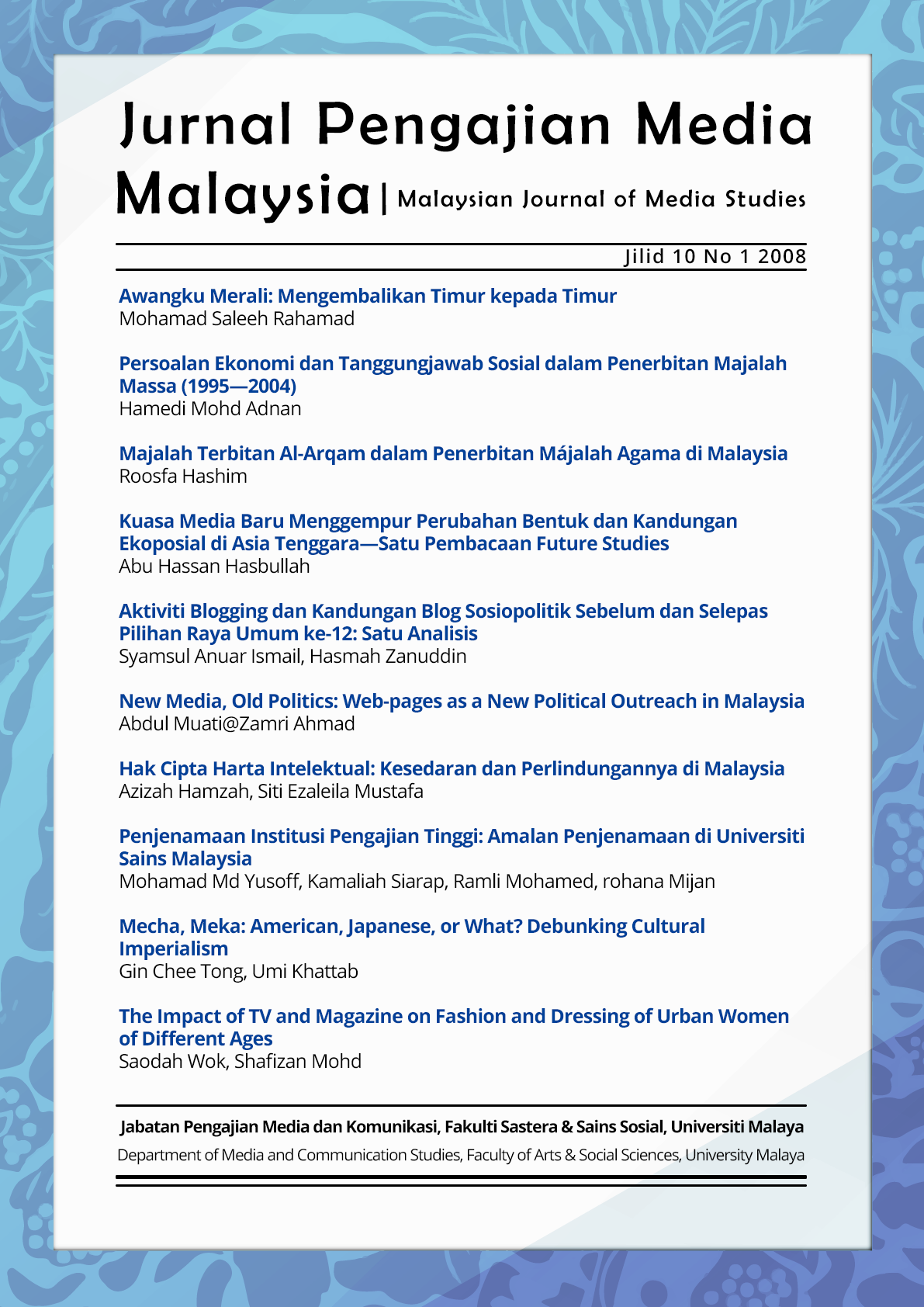Mecha, Meka: American, Japanese, or What? Debunking Cultural Imperialism
Main Article Content
Abstract
Although Japan’s mass culture has long prevailed in many parts of Asia, little has been said about why anime appeals to Asians. Japanese animation, or ‘anime’, is making global landmarks with its steady growth into the mainstream, despite its ‘cult favourite’ origins. While anime’s popularity is marked by an abundance of literature that provides readers with a deeper understanding of Japanese animation, many of these seem authored by American researchers. This paper aims to fill this lacuna by putting forward the hypothesis that ‘cultural proximity’ is the main reason for much of anime’s popularity among Asian viewers. It situates the localisation of anime in the context of global flows and audience reception studies, before undertaking a semiotic analysis of three anime programmes: Saiyuki Reload Gunlock, Otogizoushi and Gankutsuou. The study finds that anime does not propagate homogeneity; rather it depicts a hybrid of Asian cultural icons, values and practices, to better appeal to diverse Asian consumers.
Downloads
Article Details

This work is licensed under a Creative Commons Attribution 4.0 International License.
